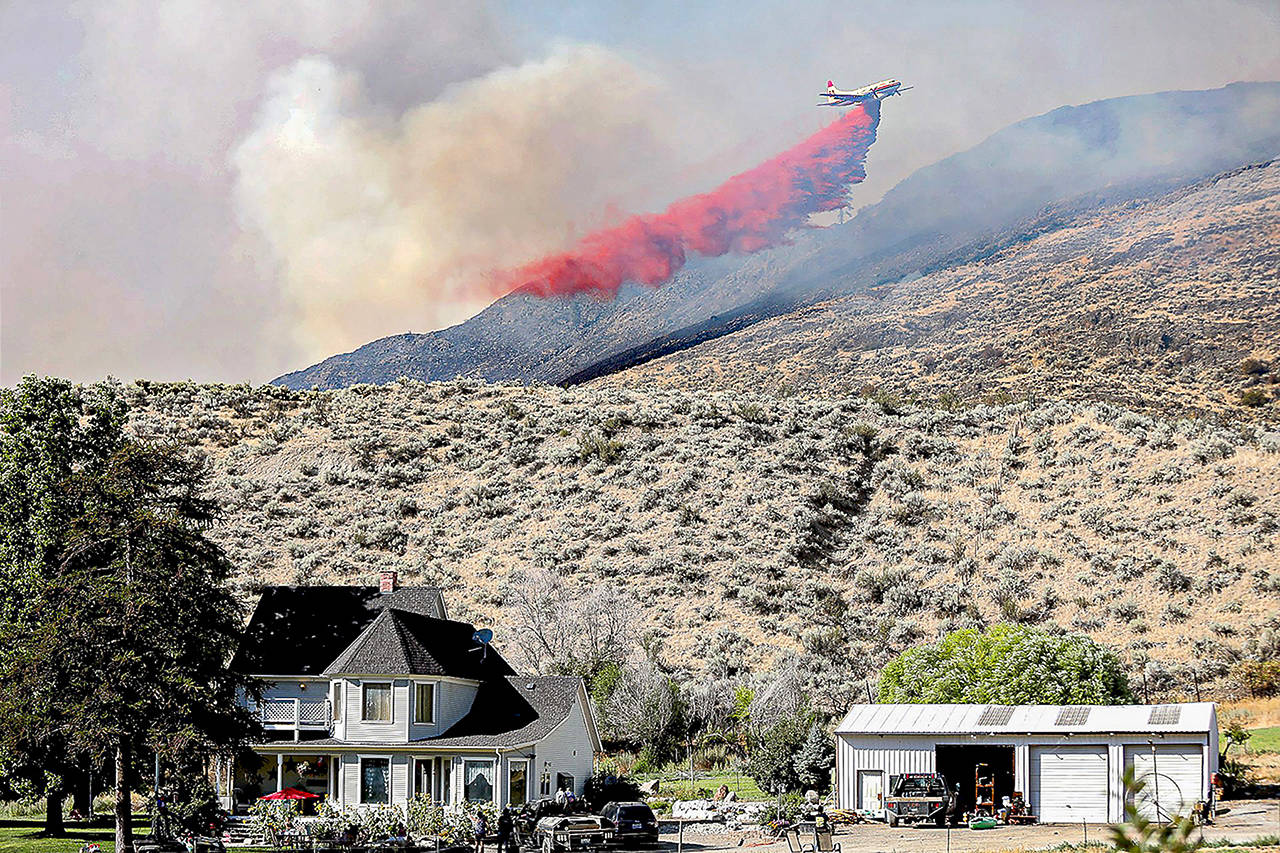The threat of wildfires in much of Washington state is expected to be above average this summer as hot and dry conditions are predicted through September.
This May was warm and dry across much of the Pacific Northwest, with the exception of some areas of the Cascades and in Western Washington. Most of Eastern Washington and Southwest Oregon saw less than 10% of their average precipitation for the month, according to a fire outlook report by the Predictive Services of the National Interagency Fire Center.
The outlook for June shows it will be likely warmer and drier across Washington and Oregon in June, except for the western portions of each state running from the Olympic Peninsula through Western Oregon.
Across Washington state, there has already been a significant number of fires in 2021, according to the state Department of Natural Resources. From the beginning of the year until June 1, there were 615 wildfires the department responded to, which burned more than 1,384 acres. Nearly 500 of these fires were in Eastern Washington, and wildfires started by people burning debris were the most common ignition source.
Of these fires, 410 were on land managed by the Department of Natural Resources. To date, this year has the seen the highest number of fires and acres burned over the last 10 years between Jan. 1 and June 1.
Mountain snowmelt is also underway. While most of Washington’s mountains and Mt. Hood in Oregon have above normal snowpack, Oregon’s basins have less than half of what they normally do. Drought conditions are expected to get worse through June. At least 72% of Oregon is abnormally dry, with a quarter already in extreme drought and small portions in exceptional drought.
The condition is better in Washington, but 87% of the state is abnormally dry, and 21% is in severe drought. The driest area in the region is the Columbia Basin, where grasses have finished growing and will begin to dry out.
Much of California and states in the Southwest are also experiencing significant drought.
As climate change continues to impact Puget Sound, summers are expected to keep getting warmer and drier, impacting snowpack and water flow in rivers. At the same time, winters will likely become more rainy and less precipitation will fall as snow in the mountains, further reducing snowpack.
This story originally appeared in the Seattle Weekly, a sister publication to The Herald.
Talk to us
> Give us your news tips.
> Send us a letter to the editor.
> More Herald contact information.

























